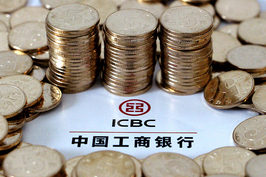Closer Look: China's Debt Crisis Has Similarities to 1998 Situation
China's last major debt cleanup beginning in 1998 unloaded trillions of yuan of non-performing loans for major banks by injecting 2 trillion yuan ($295 billion) of liquidity into the market. Fortunately, the expensive strategy successfully wiped out bad debts and strengthened asset quality in the banking sector. It promoted a round of market-oriented reforms in the banking industry without bringing on serious inflation, paving the way for a decade of rapid growth for the Chinese economy between 2004 and 2014.
Today, China's banking industry again faces the risk of surging bad loans. The industry is in different shape than it was 18 years ago. With capitalization of more than 1 trillion yuan, loss provisions of 2 trillion yuan and deposits of 120 trillion yuan, Chinese banks seem to have more weapons in the fight against bad loans than before, not to mention accumulated experience with debt-to-equity swaps and bankruptcy procedures.
But we are facing similar challenges — how to price assets in debt-to-equity swaps and bankruptcy and how to promote the process under market rules. The state has rolled back its legacy role as guarantor of company debts, but a market-clearing mechanism has yet to be put in place.
The government is still playing multiple roles in the market, including investor in state-owned enterprises (SOEs), bankruptcy administrator and guarantor of the banking industry. How it can achieve the differing and sometimes conflicting objectives of these roles is an unanswered question. What makes things even more complicated is the entangled relationship between local and central governments, as well as different central government agencies.
Since last year, several large SOEs have entered bankruptcy proceedings. Some of them are deserved, but some are not. There are also companies that are widely expected to become insolvent that are being rescued by converting debt to equity, sparking skepticism about black-box operations and administrative intervention. Many creditors believe the scope of their losses will eventually be determined by the government rather than market mechanisms.
It's also worth noting that the more than 20 trillion yuan in wealth management funds managed by banks are expected to play a big role in this round of debt cuts. The funds, raised from the general public, will be developed into different financial instruments by banks to participate in programs designed to reduce corporate debts. However, falling outside strict credit supervision and restrictions on loss provisions that apply to banks, the free maneuvering of these wealth funds forms a de facto kind of shadow banking.
The massive wealth management funds, with low financial costs, will be a reasonable choice for local governments to deal with the debt overhang, compared with raising capital from private investors. But the central government will play the role of lender of last resort if related risks blow up. The obscure border around government power also means unlimited liability. It is hard to say whether it empowers China, or brews a future storm.
Part1: China Confronts Danger of Large Debts With Broad Restructuring
Part2: China's Debt-to-Equity Push Triggers Concern
Part3: Public-Private Partnerships May Have Added to Debt Overhang
Part4: Government-Backed Investment Funds to Help With Deleveraging
Managing Editor of Caixin Media and Managing Editor of Caixin Weekly
- 1China Moves to Tighten Air-Quality Standards as Beijing Reports Best-Ever Skies
- 2China Threatens EU After Carbon Border Tax Takes Effect
- 3Gansu Ex-Vice Governor Jailed 15 Years for Bribery, Insider Trading
- 4 Exclusive: Wingtech Chair Vows to Regain Control of Nexperia After 100-Day Standoff
- 5Cover Story: How Resource Nationalism Is Redrawing the Global Mineral Playbook
- 1Power To The People: Pintec Serves A Booming Consumer Class
- 2Largest hotel group in Europe accepts UnionPay
- 3UnionPay mobile QuickPass debuts in Hong Kong
- 4UnionPay International launches premium catering privilege U Dining Collection
- 5UnionPay International’s U Plan has covered over 1600 stores overseas




